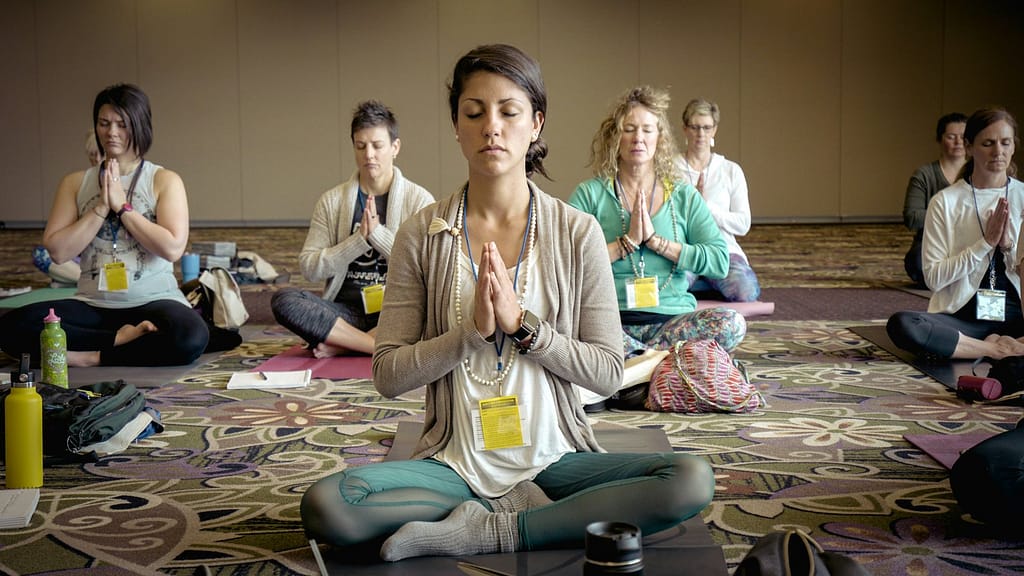
Are You looking for a simple and effective approach to practice meditation? Our step-by-step guided meditations for beginners will help you navigate meditation with ease. Dive into the world of mindfulness and relaxation as we explore the benefits, techniques, and tips for beginners. Discover the power of guided meditation and take the first steps towards a more balanced and fulfilled life. We can’t wait to guide you through this tranquil experience!
Key Takeaways:
- Relaxation: Guided meditation can help beginners relax both mentally and physically, reducing stress and promoting a sense of calm.
- Step-by-Step Approach: This form of meditation provides a simple, easy-to-follow method for beginners to get started with meditation, making it accessible to everyone.
- Mental Clarity: Through guided meditation, beginners can gain mental clarity and focus, helping to improve concentration and overall well-being.
Laying the Groundwork
If you’re new to guided meditation, it’s important to start by laying the groundwork for your practice. This means creating a conducive meditation space and establishing a regular meditation routine. By taking these initial steps, you can set yourself up for a more fulfilling and effective meditation experience.
Creating Your Meditation Space
One of the first steps in beginning your guided meditation practice is to create a dedicated space for your sessions. This space should be quiet, comfortable, and free from distractions. Consider adding items like a cushion or mat, candles, or calming artwork to help create a peaceful and inviting atmosphere for your practice.
It’s important to remember that your meditation space should be a place where you feel calm and centered. By carefully curating your surroundings, you can help to enhance your mindfulness and create a more soothing experience during your meditation sessions.
Establishing a Meditation Routine
Any successful guided meditation practice requires a consistent routine. Set aside a specific time each day to devote to your meditation practice.
This could be in the morning before starting your day, during a lunch break, or in the evening as a way to wind down. By incorporating meditation into your daily routine, you can reap the benefits of regular practice and solidify it as a habit in your life.
It’s essential to prioritize your meditation practice by making it a regular part of your day. Make sure to carve out time for your sessions, and treat it as an important commitment to your overall well-being.
engaging, and supportive.
Your First Meditation Session
While beginning your meditation journey may feel daunting, it doesn’t have to be. Your first session is an opportunity to start cultivating a deeper sense of awareness and inner peace. Here’s how to get started on the right foot.
Finding the Right Guide for You
Right, finding the right guide to lead you through your meditation is crucial. There are countless meditation apps, YouTube channels, and in-person classes available. Spend some time exploring different options to see which guide resonates with you the most.
Some guides may have a soothing voice that helps you relax, while others may focus on specific meditation techniques that align with your needs. Trust your instincts and choose a guide that makes you feel comfortable and supported.
Understanding the Steps
Right, understanding the steps involved in the meditation process is key to a successful practice. The first step is finding a quiet, comfortable space where you won’t be interrupted. Next, sit or lie down in a comfortable position, close your eyes, and focus on your breath.
As thoughts come and go, simply acknowledge them without judgment and gently refocus on your breath. It’s normal for your mind to wander during meditation, so be patient with yourself as you navigate this new experience.
Plus, remember that meditation is a practice, and it’s okay if it feels challenging at first. With time and consistency, you’ll begin to notice the positive effects of meditation on your overall well-being. Stick with it, and soon you’ll be reaping the benefits of a calmer mind and a greater sense of inner peace.
Deepening Your Practice
For beginners, deepening your practice can be an important step in maximizing the benefits of guided meditation. As you become more comfortable with the basics, you may want to explore different types of guided meditations and incorporate tips for enhancing your experience.
Exploring Different Types of Guided Meditations
For those looking to explore different types of guided meditations, it’s important to understand that there are various approaches to mindfulness and relaxation. Assume that not all guided meditations will resonate with you, and that’s okay. Some common types include mindfulness meditation, loving-kindness meditation, body scan meditation, and visualization meditation.
| Mindfulness Meditation | Focuses on cultivating awareness of the present moment |
| Loving-Kindness Meditation | Emphasizes sending love and compassion to oneself and others |
| Body Scan Meditation | Brings attention to different parts of the body, promoting relaxation |
| Visualization Meditation | Involves creating mental images to promote relaxation and positivity |
| Recognizing | that different types may suit different individuals based on their preferences and needs |
Tips for Enhancing Your Experience

Guided meditation can be enhanced by incorporating various tips into your practice. These may include finding a quiet and comfortable space, setting a regular practice schedule, using calming music or nature sounds, and experimenting with different breathing techniques. Recognizing that everyone’s journey is unique, it’s important to find what works best for you.
This includes being patient and open-minded as you explore what resonates with you. It’s important to experiment with different types and tips for enhancing your experience to find what brings you the most peace and relaxation during your practice.
- Quiet and comfortable space
- Regular practice schedule
- Calming music or nature sounds
- Experimenting with different breathing techniques
- Recognizing that everyone’s journey is unique
Overcoming Common Challenges
Now that you’ve started your journey into guided meditation, it’s important to address some of the common challenges that beginners often face. By overcoming these obstacles, you’ll be able to fully embrace the benefits of meditation and make it a regular part of your routine.
Keeping Focus
Overcoming distractions and keeping your focus during meditation can be a challenge, especially for beginners. It’s natural for the mind to wander, but practicing gentle redirection can help.
When you notice your thoughts drifting, gently guide your attention back to your breath or the guided instructions. Remember, it’s okay to have wandering thoughts – the key is to acknowledge them and come back to the present moment.
Dealing with Restlessness
Common challenges during meditation also include feelings of restlessness or discomfort. It’s important to acknowledge these feelings without judgment.
Sometimes, simply shifting your position or taking a moment to adjust your posture can help alleviate restlessness. Additionally, bringing awareness to the sensations in your body can help ground you in the present moment and reduce feelings of restlessness.
Any beginner to meditation may experience moments of distraction or restlessness, but with practice and patience, these challenges can be overcome. By acknowledging and addressing them in your practice, you’ll be able to cultivate a deeper sense of peace and tranquility during guided meditation.
Guided Meditation for Beginners – A Simple, 3 Step Winning Approach
Now that you have learned the basics of guided meditation, you are well on your way to experiencing the incredible benefits of this practice. By following a simple, step-by-step approach, you can easily incorporate meditation into your daily routine and begin to see positive changes in your life.
Remember to be patient with yourself as you continue to develop your meditation skills, and don’t be afraid to explore different techniques and styles to find what works best for you. With dedication and practice, you will soon find yourself reaping the rewards of a calm and centered mind.

